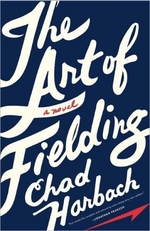The Art of Publishing
Last weekend Mother Nature treated Chicago to one of those fall marvels, a classic Indian summer day where you shed the jacket and took in the magic of the autumn colors.
Unless you were, like me, stuck in a rental car traveling back and forth along I-90 all weekend, counting construction cones. On Saturday, I trekked the 85 miles from Evanston to Rockford, to attend A World of Words, a book fair hosted by In Print, the Chicago Writers Association’s Rockford affiliate. Like déjà vu all over again, I found myself back on the same stretch of highway the next day, this time traveling to the Gail Borden Public Library in Elgin, where I and Samantha Hoffman, a friend and fellow author, gave a presentation titled “Turning Reality into Fiction.”
I would have been disappointed but not terribly surprised if no one came to listen to us talk about how real-life events inspired us to write our novels. As it turned out, seven people sprinkled a room with seating for 100. At least six of them, I am pretty sure, hadn’t just stumbled in there. I’m not so sure about an elderly man who stood in the back and asked a question that I think was calling into question the veracity of the Kennedy assassination report. The others all listened intently and asked good questions.
 At the end of the presentation, one of the women asked Samantha and I if either of us had read a Vanity Fair article about the novel, The Art of Fielding. The two of us looked at each other, not because either of us were familiar with the article but because we had chatted before about our mutual disappointment with the Chad Harbach best-seller. Samantha disliked it so much that she rated it 1 star out of 5 on Goodreads. I was not quite so harsh, giving it a mediocre 3 star rating and noting in my review that perhaps I had come to it with expectations too high.
At the end of the presentation, one of the women asked Samantha and I if either of us had read a Vanity Fair article about the novel, The Art of Fielding. The two of us looked at each other, not because either of us were familiar with the article but because we had chatted before about our mutual disappointment with the Chad Harbach best-seller. Samantha disliked it so much that she rated it 1 star out of 5 on Goodreads. I was not quite so harsh, giving it a mediocre 3 star rating and noting in my review that perhaps I had come to it with expectations too high.
Since reading Harbach’s 544-page book about baseball and life on a small college campus I’d been curious to know what it was about his book that made it that one book that everyone talks about. I thought it was good – very good in parts – but never great. Overall, I liked it and I am glad that I read it but I've read better baseball books ("The Natural") and better portrayals of small college life ("Wonder Boys").
As an author, I couldn’t help but wonder what it was about Harbach’s book that made it so special. Feeding my curiosity, that night I Googled “Vanity Fair and The Art of Fielding” which pointed me not to the original article, which is not online, but to an extended version of the article that was being sold, for $1.99, as an e-book, with the long-winded title “Vanity Fair's How a Book is Born: The Making of The Art of Fielding.”
Biting the bullet, I clicked “Buy” and then turned on my Kindle and waited for it to refresh. Moments later, I was reading my new e-article, which I finished in two sittings. To my mind, it was worth the $1.99 cover price, because it answered the question that had been nagging me since reading “The Art of Fielding,” which is why it had become what it had become.
The article, by Keith Gessen, a novelist himself (“All the Sad Young Literary Men”) and friend of Chad Harbach, details the stages that the book went through before it became what it became. Gessen might be a bit too close to the author to be impartial, but even he acknowledges that when he read the early drafts of his friend’s book, he though it a bit light. He came to change his view, however, as Harbach added more and more to the story. Harbach was hardly an overnight success story. He spent 10 long years writing The Art of Fielding, during which time he was struggling to keep creditors at bay. When the manuscript was finally done, a good number of literary agents passed on it before one read it and couldn’t believe that there weren’t agents crawling all over Harbach. There weren’t; there was one agent who saw the potential of the manuscript and carried it all the way to auction and then to runaway best-seller.
Gessen’s article is not just about his friend’s success story, it’s also about the dramatically changing world of the publishing industry, and he touches on the slow death of the traditional publishing model and the rise of the behemoth that is Amazon. It is with some irony that his own article could be a poster for this brave new digital world, turning it into a $1.99 e-book for purchase on Kindle.
It’s a fascinating read, giving insight into how Harbach’s book became what it did (don’t think it did it all on its own, there was a publishing promotional blitz behind it like few books have ever seen) but also how the publishing world has become what it has become.
At the end, Gessen writes, “Most writers, me among them, are by nature pretty cynical about publishing. It's hard not to be, considering all the crap they put out and call books.” Ultimately, however, he finds reason for hope, that being that there are a lot of people out there who still love books and will go to all lengths to share that love with others.



 Randy Richardson
Randy Richardson
Reader Comments (1)
It's always good to have wonderful weather. However, during the fall, when temperatures can be unpleasant even at noon, it is a treat to enjoy a warm, sunny day.
Having six people who are genuinely interested in learning about the writing process and the inspiration behind your better is better than having a hundred people who just want to pass the time. I think I can safely assume that those who made it there were happy that they had the time to ask questions with less competition.